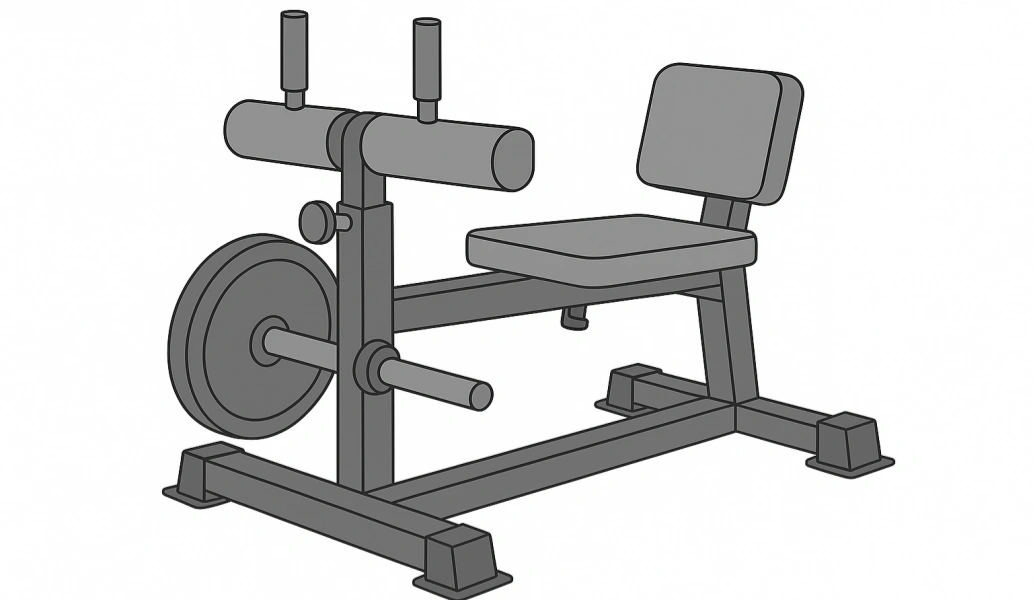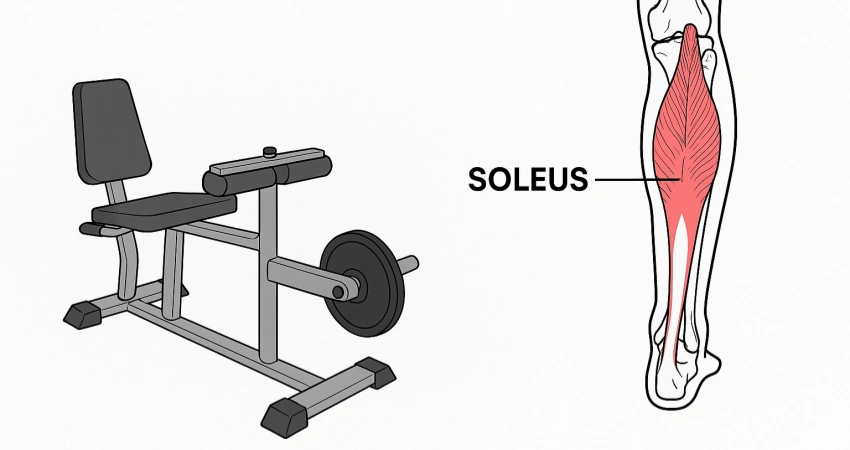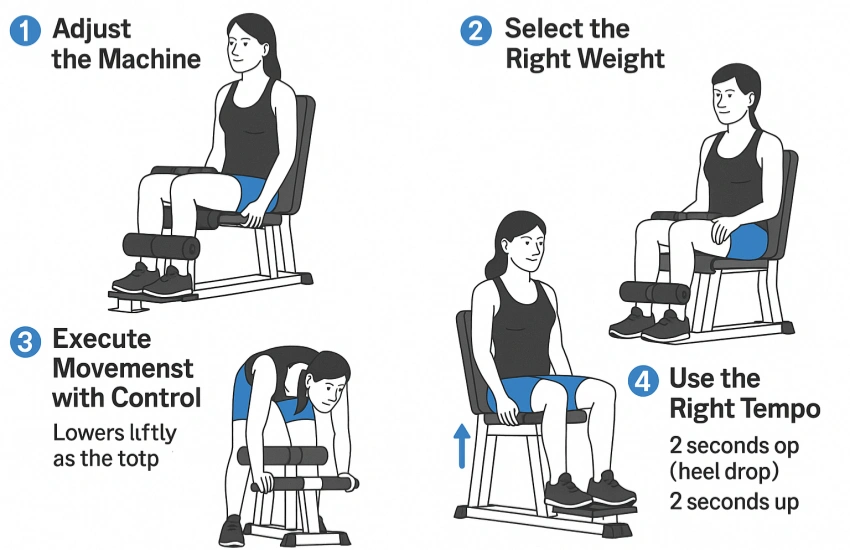
The seated calf raise machine doesn’t get much attention — but it should.
If your calves haven’t grown in months, it’s probably because you’ve only been doing standing raises and ignoring the soleus — the deep muscle that actually builds lower leg thickness.
This machine solves that. It locks you in, bends your knees, and puts the load exactly where it belongs: your lower calves. No momentum. No shortcuts. Just deep stretch, full range, and real tension — exactly what it takes to grow.
This guide shows you how to fix that. How to use the machine properly, avoid the common mistakes, and finally build calves that actually grow.
The seated calf raise machine is one of the most underrated tools for building real lower leg size — because it trains the part of your calves that most people completely miss: the soleus.

This deep muscle sits under the gastrocnemius and only gets fully activated when your knees are bent. That’s exactly what this calf machine does. Most lifters rely solely on standing calf raises, which means they’re leaving half their calf potential untouched.
Here’s Why the Seated Calf Raise Machine Delivers:
Who Should Use a Seated Calf Raise Machine
The seated calf raise machine only works if you use it right — and most people rush through it or load too much weight. Here’s how to do it properly for real calf growth.

Below is a step-by-step breakdown of how each exercise works.
step1: Adjust the Machine
step2: Select the Right Weight
step3: Execute the Movement with Control
One full rep should look like this:
step4: Use the Right Tempo
Stick to a 2–1–2 tempo:
This keeps the tension on your soleus where it belongs.
Notice:Don’t rush this movement. It’s not about how fast you go — it’s about how deeply you stretch and how hard you squeeze.
The seated calf raise machine looks simple — but most people get it wrong. These common mistakes can make your calf training useless. Here’s what to avoid and how to fix it.
Bouncing at the Bottom
Letting your heels drop too fast turns the movement into a momentum bounce. This takes tension off the muscle and loads your joints instead.
Fix it: Lower slowly. Feel the stretch. Pause before driving up.
Using Too Much Weight
Going too heavy makes it impossible to control the rep. You lose the squeeze, the pause, and all the effectiveness.
Fix it: Choose a weight that lets you move with control through the full range.
Cutting the Range Short
If your heels never drop fully or you don’t rise all the way to your toes, you’re only half-training the muscle.
Fix it: Drop deep below the platform, then rise until you can’t go higher.
Rushing Through Reps
Fast reps don’t grow calves. They reduce tension time and turn the movement into cardio.
Fix it: Stick to a controlled 2–1–2 tempo:
2 seconds down → 1 second hold → 2 seconds up
Poor Setup
Loose knee pads, bad foot placement, or an awkward position will mess up your form from the start.
Fix it:
Get these basics right, and the seated calf machine will actually deliver the stretch, tension, and growth your calves need.
Comparison Table
| Standing Calf Raise Machine | Seated Calf Raise Machine | |
|---|---|---|
| Primary Muscle Target | Gastrocnemius (outer calf) | Soleus (deep, thick calf base) |
| Knee Position | Straight | Bent |
| Strength Type | Explosive / Power-based | Endurance / Volume-based |
| Best For | Size + peak shape | Density + lower leg mass |
| Typical Load | Heavier weight, fewer reps | Moderate weight, higher reps |
| Mobility Demands | Requires more ankle core stability | More stable and fixed |
Yes, they do — especially when you’re focused on building stronger, thicker lower legs. The seated position targets a deep muscle called the soleus, which plays a big part in ankle stability and calf development. If your goal is balanced calf growth, this machine deserves a spot in your routine.
For Beginners:
Start with body weight or light resistance (e.g., 20–50 lbs / 9–23 kg on a machine) to master the movement. Perform 2–3 sets of 12–20 reps with controlled motion.
For Strength & Muscle Growth (Intermediate/Advanced):
Use a weight that allows 8–15 reps with good form (typically 1.5–2.5x your body weight on a machine).
For example: If you weigh 150 lbs (68 kg), try 75–150 lbs (34–68 kg) and adjust as needed.
Key Tips:
Progressive overload—gradually increase weight when 15+ reps feel easy.
If strength is the goal, go heavier (5–8 reps with challenging weight).
Sit down and adjust the knee pads so they’re snug, not crushing.
Place the balls of your feet on the platform edge — heels hanging off.
Lower slowly, feel the stretch.
Push up, squeeze at the top.
Repeat with control, using a 2–1–2 tempo.
I’m Jessica Camp, a passionate fitness enthusiast and the creative force behind Inpek Fitness’s content. With over a decade in the fitness industry, I combine my expertise in exercise science with a deep knowledge of commercial gym equipment. I’m dedicated to promoting health and wellness by sharing valuable tips, training techniques, and the latest trends in Pin Loaded Machines, Plate Loaded Machines, Multi Function Gym Machines, Gym Multi, and Free Weights. Whether you’re a gym owner or a fitness enthusiast, my articles are crafted to inspire and empower you to reach your fitness goals. When I’m not writing, I love working out and exploring innovative fitness solutions.
Looking to enhance your gym with premium equipment? Have inquiries or ideas? Complete the form below to engage with our expert team. We’ll work with you to realize your fitness facility goals efficiently and effectively.